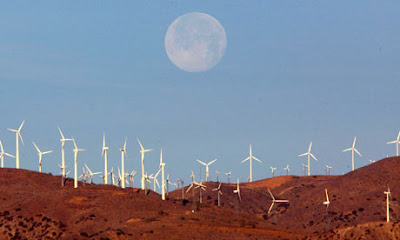Millions Face Glacier Catastrophe
Published on Sunday, November 20, 2005 by the Observer/UK, Posted on Commondreams.
Ghat was destroyed when a lake, high in the Himalayas, burst its banks. Swollen with glacier meltwaters, its walls of rock and ice had suddenly disintegrated. Several million cubic metres of water crashed down the mountain.
When Ghat was destroyed, in 1985, such incidents were rare - but not any more. Last week, scientists revealed that there has been a tenfold jump in such catastrophes in the past two decades, the result of global warming. Himalayan glacier lakes are filling up with more and more melted ice and 24 of them are now poised to burst their banks in Bhutan, with a similar number at risk in Nepal.
But that is just the beginning, a report in Nature said last week. Future disasters around the Himalayas will include 'floods, droughts, land erosion, biodiversity loss and changes in rainfall and the monsoon'.
The roof of the world is changing, as can be seen by Nepal's Khumbu glacier, where Hillary and Tenzing began their 1953 Everest expedition. It has retreated three miles since their ascent. Almost 95 per cent of Himalayan glaciers are also shrinking - and that kind of ice loss has profound implications, not just for Nepal and Bhutan, but for surrounding nations, including China, India and Pakistan.
Eventually, the Himalayan glaciers will shrink so much their meltwaters will dry up, say scientists. Catastrophes like Ghat will die out. At the same time, rivers fed by these melted glaciers - such as the Indus, Yellow River and Mekong - will turn to trickles. Drinking and irrigation water will disappear. Hundreds of millions of people will be affected.
Ghat was destroyed when a lake, high in the Himalayas, burst its banks. Swollen with glacier meltwaters, its walls of rock and ice had suddenly disintegrated. Several million cubic metres of water crashed down the mountain.
When Ghat was destroyed, in 1985, such incidents were rare - but not any more. Last week, scientists revealed that there has been a tenfold jump in such catastrophes in the past two decades, the result of global warming. Himalayan glacier lakes are filling up with more and more melted ice and 24 of them are now poised to burst their banks in Bhutan, with a similar number at risk in Nepal.
But that is just the beginning, a report in Nature said last week. Future disasters around the Himalayas will include 'floods, droughts, land erosion, biodiversity loss and changes in rainfall and the monsoon'.
The roof of the world is changing, as can be seen by Nepal's Khumbu glacier, where Hillary and Tenzing began their 1953 Everest expedition. It has retreated three miles since their ascent. Almost 95 per cent of Himalayan glaciers are also shrinking - and that kind of ice loss has profound implications, not just for Nepal and Bhutan, but for surrounding nations, including China, India and Pakistan.
Eventually, the Himalayan glaciers will shrink so much their meltwaters will dry up, say scientists. Catastrophes like Ghat will die out. At the same time, rivers fed by these melted glaciers - such as the Indus, Yellow River and Mekong - will turn to trickles. Drinking and irrigation water will disappear. Hundreds of millions of people will be affected.



Comments